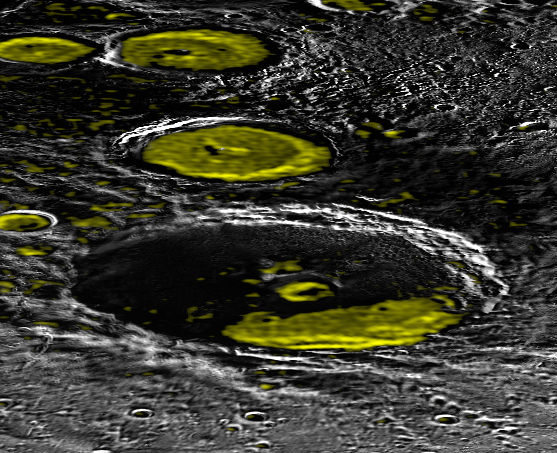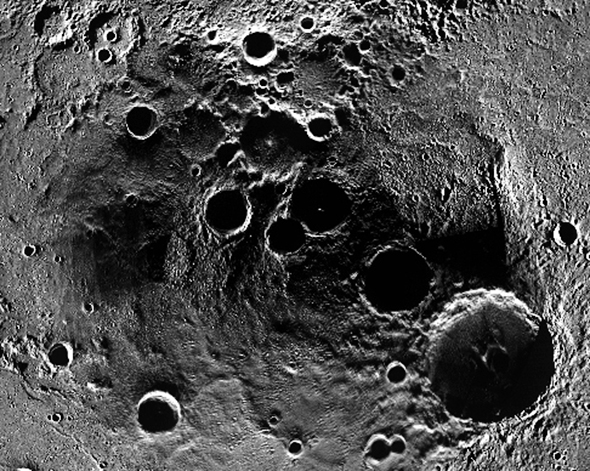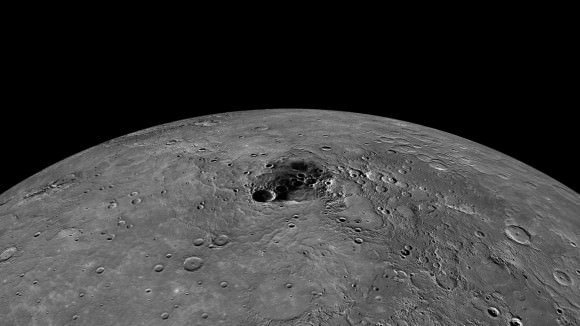It’s always good to get a little change of perspective, and with this image we achieve just that: it’s a view of Mercury’s north pole projected as it might be seen from above a slightly more southerly latitude. Thanks to the MESSENGER spacecraft, with which this image was originally acquired, as well as the Arecibo Observatory here on Earth, scientists now know that these polar craters contain large deposits of water ice – which may seem surprising on an airless and searing-hot planet located so close to the Sun but not when you realize that the interiors of these craters never actually receive sunlight.
The locations of ice deposits are shown in the image in yellow. See below for a full-sized version.
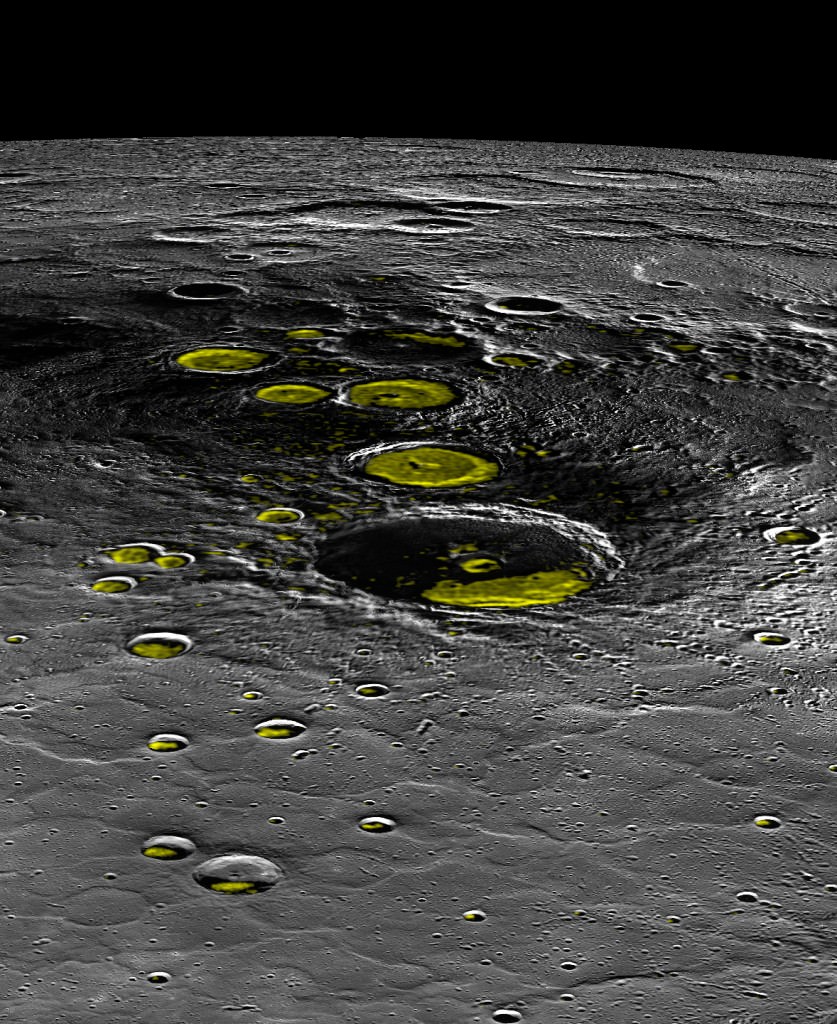
The five largest ice-filled craters in this view are (from front to back) the 112-km-wide Prokofiev and the smaller Kandinsky, Tolkien, Tryggvadottir, and Chesterton craters. A mosaic of many images acquired by MESSENGER’s Mercury Dual Imaging Sustem (MDIS) instrument during its time in orbit, you would never actually see a view of the planet’s pole illuminated like this in real life but orienting it this way helps put things into…well, perspective.
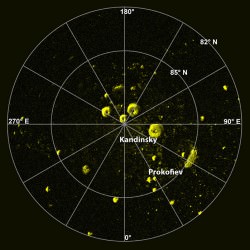
Radar-bright regions in Mercury’s polar craters have been known about since 1992 when they were first imaged from the Arecibo Observatory in Puerto Rico. Located in areas of permanent shadow where sunlight never reaches (due to the fact that Mercury’s axial tilt is a mere 2.11º, unlike Earth’s much more pronounced 23.4º slant) they have since been confirmed by MESSENGER observations to contain frozen water and other volatile materials.
Read more: Ice Alert! Mercury’s Deposits Could Tell Us More About How Water Came To Earth
Similarly-shadowed craters on our Moon’s south pole have also been found to contain water ice, although those deposits appear different in composition, texture, and age. It’s suspected that some of Mercury’s frozen materials may have been delivered later than those found on the Moon, or are being restored via an ongoing process. Read more about these findings here.
Explore Mercury’s shadowed craters with the Water Ice Data Exploration (WIDE) app
In orbit around Mercury since 2011, MESSENGER is now nearing the end of its operational life. Engineers have figured out a way to extend its fuel use for an additional month, possibly delaying its inevitable descent until April, but even if this maneuver goes as planned the spacecraft will be meeting Mercury’s surface very soon.
Source: MESSENGER

